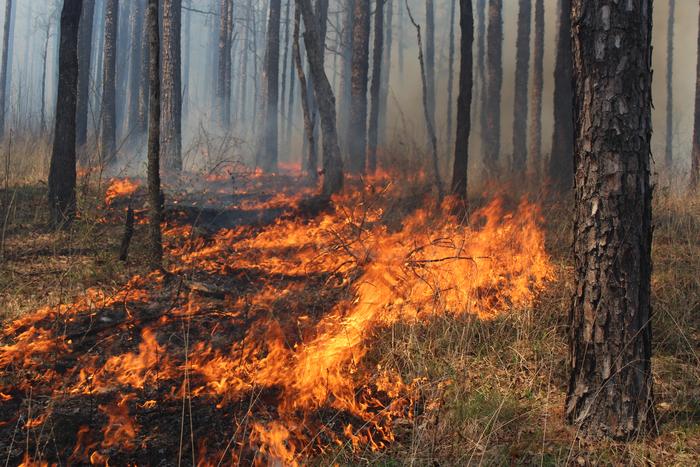
Wildfire management has emerged as a significant concern for ecosystems, communities, and local economies across the southeastern United States. Recent research conducted by the USDA Forest Service has underscored the increasing complexity of wildfire risks in this region, revealing that both societal changes and evolving forest conditions will influence these risks in the coming decades. A new report from this research sheds light on the dynamics of fire management, emphasizing the importance of prescribed burns and fuel management in mitigating wildfire threats.
In the era of climate change, the southeastern United States faces a dual challenge: population growth coupled with a changing climate that increases the likelihood of wildfires. The Fire report highlights that as communities expand into forested areas, the interfaces between wildlands and urban environments—referred to as the wildland-urban interface—become more pronounced. This increased interface results in heightened exposure for residents to the risks posed by wildfires and the unhealthy smoke they generate, necessitating renewed focus and innovative strategies for wildfire management.
Researchers, led by Lars Pomara, have employed sophisticated models to gauge the current state of wildfire risks across the southern landscape. These risks are categorized not only by the direct dangers posed by flame exposure but also by the substantial public health concerns driven by smoke inhalation. The team’s work further explores the risks to carbon stocks in forests, as significant wildfires can threaten the amount of carbon stored in these essential ecosystems. By creating detailed maps of these risks, the researchers have developed a more nuanced understanding of how wildfire threats vary across different scenarios and areas.
The projections made by the researchers indicate a disconcerting trend: even in the more moderate climate scenarios, regions such as the Southeastern Coastal Plain will likely become more susceptible to intense wildfires. This potential shift in risk is not merely hypothetical; it is grounded in ongoing climatic patterns that suggest warmer conditions will prevail. With these changes, the existing windows of time available for implementing prescribed burns—one of the most effective tools for reducing wildfire risk—may dwindle. This revelation poses a pressing challenge for forest managers engaging in the delicate balancing act required for effective fire management.
The concept of prescribed burning serves as a cornerstone of fire management strategy due to its myriad benefits. These controlled burns, meticulously planned and executed by trained professionals, allow for low-intensity fires that reduce pre-existing fuel loads in forests. The result is a healthier forest ecosystem, less likely to experience catastrophic wildfires in the future. Without intervention, segments of forested land can accumulate excessive fuel, heightening the chances of more severe and dangerous threats.
As the southeastern United States grapples with these changes and challenges, the importance of effective fuel management practices cannot be overstated. The study highlights mechanical methods for reducing fuel buildup as valuable complementary strategies to prescribed burning. Research found that implementing a sustained fuel management program could potentially mitigate some of the projected increases in wildfire risk, providing a much-needed safety net for forested areas and the communities that surround them.
In addition, the study elucidates the interplay between changes in socio-economic factors and wildfire risk. Areas characterized by higher vulnerability due to wealth disparities, residential mobility, and housing density will potentially experience concentrated risks from wildfires. This intersection of socio-economic variables with environmental factors will require a multidisciplinary approach to address the escalating threats effectively. Policymakers and forest managers will need to work collaboratively to prioritize resources effectively and navigate the complexities of wildfire risk management.
Moreover, the findings contained within this report have implications beyond mere risk assessment. They offer actionable insights for forest managers, enabling them to allocate resources more judiciously and improve the investments directed toward protecting communities, watersheds, and forest carbon. With a thorough understanding of where risk levels are highest, decision-makers can craft more effective responses tailored to their specific landscapes and constituents.
Furthermore, the report emphasizes the necessity of community engagement in wildfire management. It recognizes the valuable contributions that community input can provide in pressing issues like risk management and planning for fire-smart initiatives. By harnessing local knowledge and fostering cooperative strategies between stakeholders, there lies great potential for enhancing resilience to wildfire threats.
As part of a holistic approach to wildfire management, the report also encourages educational outreach to raise public awareness regarding fire risks and the actions that can be taken to mitigate these dangers. By fostering an informed citizenry, communities can work together with forestry professionals to create fire-adapted landscapes that can withstand the pressures posed by climate change and urban encroachment.
With each passing year, the reality of wildfire risks becomes an increasingly palpable concern for residents of the southeastern United States. This report serves as a clarion call for immediate action, emphasizing that the window for developing effective strategies will soon narrow. Forest management practices must prioritize fire risk mitigation while allowing for the essential ecological roles that fire plays within these ecosystems.
In conclusion, the findings of the USDA Forest Service’s recent report on wildfire risks illustrate the profound changes occurring in the southeastern U.S. landscape. As development encroaches upon fire-prone ecosystems, residents and forestry professionals alike must remain vigilant in their approach to wildfire management. The collaborative insights provided by this research pave the way for actionable strategies that can help ensure a safer future for both people and the forests they depend upon.
Subject of Research: Fire management and wildfire risk projection in the southeastern United States
Article Title: Evolving Wildfire Risks in the Southeastern U.S.: A Call for Action
News Publication Date: October 2023
Web References: https://research.fs.usda.gov/srs/projects/southern-forest-assessment-library/southern-forest-outlook
References: USDA Forest Service report, DOI 10.2737/SRS-GTR-280
Image Credits: Virginia McDaniel, USDA Forest Service
Keywords
Wildfires, Risk management, Fire management, Forest ecology, Prescribed burning, Southern forests, Climate change, Community engagement.
Tags: climate change impact on wildfirescommunity resilience to wildfiresecological impact of wildfiresfuel management techniquesinnovative wildfire management strategiespopulation growth and wildfire risksprescribed burns for fire mitigationsmoke exposure from wildfiresUSDA Forest Service research findingswildfire management strategieswildfire risks in southeastern U.S.wildland-urban interface challenges



